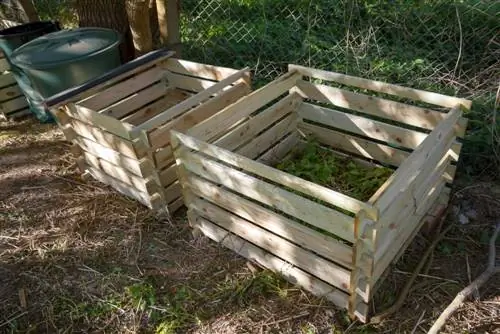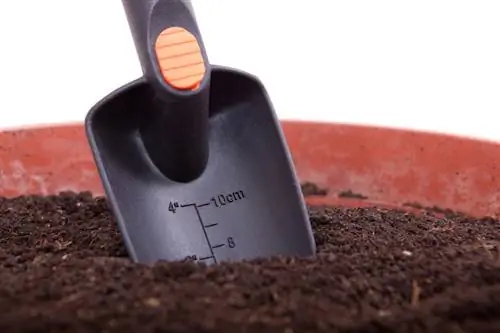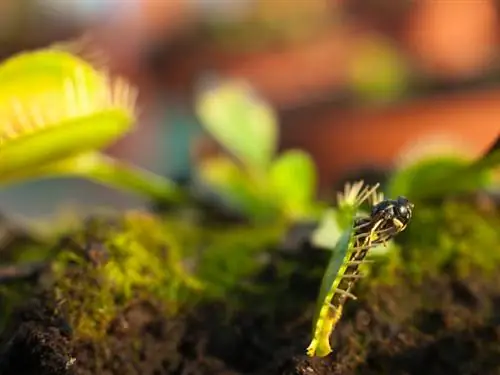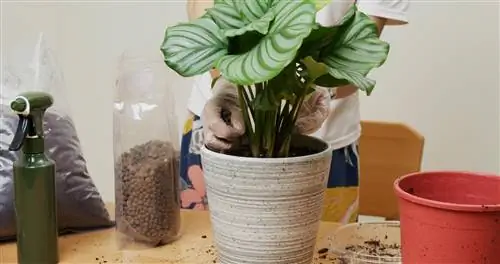- Author admin [email protected].
- Public 2023-12-16 16:46.
- Last modified 2025-01-23 11:21.
Composting is not only worthwhile for financial reasons - you can't do anything better for the garden from an ecological perspective. Setting up a compost is not that difficult if you place it on a good substrate and in a favorable location.
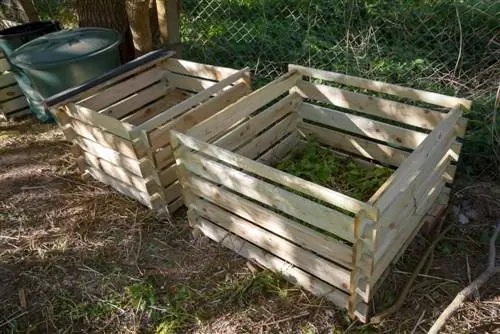
Which substrate is suitable for compost?
The ideal substrate for a compost is directly on the ground, without a base plate, to allow microorganisms to migrate and to allow moisture to drain away. The soil should be cleared of weeds and stones and, in the case of clay soils, loosened and mixed with sand or gravel.
The right substrate for compost
Whether you set up a compost bin or a traditional composter in the garden - the right surface plays an important role. It is always placed directly on the ground - without a base plate.
Good compost is only created if the microorganisms required to decompose the garden waste can migrate from the soil into the composter. Therefore, you must never place the composter on slabs or any other solid surface.
The moisture created by decomposition and rain can also drain away easily on a bare surface. If the compost material gets too wet, it rots. The compost stinks and can only be used after a long time.
Prepare soil for compost
Once you have found a good spot for the compost, clear the soil of weeds and remove stones and other thickenings.
Very firm clay soils can be loosened with a digging fork and the substrate mixed with sand or gravel.
How to build the compost properly
If the compost is re-applied, add coarsely chopped material as the bottom layer, such as:
- branches and twigs
- Tree bark
- hedge cutting
- chopped flower and perennial stems
The individual parts should not be longer than 20 cm long.
Then throw a few shovels of ripe compost (€9.00 on Amazon) onto the base layer. Alternatively, add compost starter to the compost.
Floor grid to protect against rats and mice
If you fill the compost correctly, i.e. do not use cooked food, meat and sausage waste or food leftovers, the risk of pest infestation is low.
If you want to be absolutely sure that you don't want to attract pests such as rats and mice with the compost, you can place a grid with holes that are not too small on the bottom of the composter.
Tip
You can only compost leaves from trees such as walnut trees in small quantities. It is best to create a second compost for such leaves.

